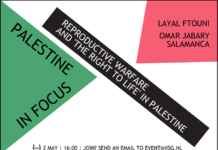Sam Stein
Mondoweiss / August 4, 2023
Israel’s High Court evicted families from Masafer Yatta in May 2022 after declaring the area a “firing zone” for exclusive military use. Jewish settlers have since established herding outposts there on the army’s watch.
On May 4, 2022, the Israeli High Court ended a 20-year legal battle. After 30 years of resistance and 20 years of court hearings, the High Court ruled that the Israeli military has full authority to evict the families in Masafer Yatta living in what the military has declared “Firing Zone 918.” Since last year’s court ruling, Masafer Yatta – inside and outside the firing zone – has seen a massive uptick in demolitions, settler violence, and military raids.
The village of Tuba, located near the edge of the firing zone, has become a constant target of settler violence. Because of its proximity to the infamous outpost Havat Maon (Hebrew for Maon Farm), the children of Tuba are forced to walk to school via military escort. In July 2023, the village was invaded by armed settlers claiming to be searching for a stolen power drill. During this raid, armed soldiers protected the settlers.
In light of recent events, residents of Tuba have requested that international activists spend time in the village to document settler and military violence. This is what brought me to the region.
On August 2, a group of settler youth brought their flock of sheep to a water well on Palestinian-owned land in Tuba. Issachar Man — an infamous settler from Havat Maon who recently threatened residents of Tuba with a second Nakba — later arrived, and the situation began to escalate. At the request of the Palestinian landowners, we called the police and the army.
Eventually, a group of soldiers and one police officer arrived. The commanding soldier, Ofir Amishay, recently handcuffed and blindfolded Palestinian activist and journalist Basil Adra. Amishay repeated orders that only Issachar Man and those with him could stay on the land near the well. He ordered us and the local Palestinians to leave but refused to indicate how far back we were required to go. This was infuriating but hardly surprising. While there are strategic reasons to call the army or police during such incidents, I cannot think of a time when the army or police made things better for Palestinians.
During the incident, the police arrested one Israeli activist for allegedly shoving a soldier and for withholding evidence. The activist was later released with a two-week ban from the West Bank. While Palestinians and activists were forced out of the area, Issachar Man and the settler youth accompanying him began setting up a tent over the well, effectively establishing a new outpost.
After the establishment of this new outpost, we saw Man bringing a large group of settlers in a jeep to the tent. Man and the group eventually left, and the youth who originally brought their flock to the well remained in the area.
While the settlers were setting up this tent, Amishay admitted that he “doesn’t know” if Man had a permit to build, and made no attempt to find out. According to the military’s own claims, and to the High Court’s ruling, any building in Firing Zone 918 is prohibited. Activists pointed this out to Amishay, but he did not respond.
Most Jewish settlements are illegal according to international law but legal according to Israeli law. However, even Israeli law considers outposts illegal. They are one of the settler movement’s most prominent methods of dispossessing Palestinians of their land, particularly in Area C of the West Bank.
Many outposts, like Havat Maon, use cattle grazing to grab as much land as possible without necessitating the large amounts of people that suburban settlements require. Herding outposts have existed since the beginning of the settler project. However, left-wing Watchdog NGO Kerem Navot has pointed out that “In recent years… the phenomenon mushroomed in terms of area size, investments, and the destructive repercussions for Palestinian communities.” According to Kerem Navot’s map, there are five herding outposts in the eastern part of Masafer Yatta. One of these outposts is owned by Issachar Man.
There are multiple settler outposts located inside the firing zone. These include Havat Maon and other violent outposts such as Avigail, Mitzpe Yair, and Havat Talia. Despite the location of these outposts, they face no risk of eviction, and unlike the local Palestinian communities, they are connected to Israeli water and electric grids. All of these outposts were established after the original declaration of the firing zone. In contrast, the Palestinian communities in the region predate firing zone by generations. Tuba resident Ali Awad can trace his family’s history in the village for more than 100 years.
The Israeli NGO Akevot has exposed documents from 1981 showing that former Defense Minister and Prime Minister Ariel Sharon ordered the declaration of Firing Zone 918 as a method of forcing Palestinians out of Masafer Yatta. This was explicitly done for the purpose of strengthening the Jewish-Israeli presence in the region. Evicting settlers from the firing zone would be contrary to its stated purpose. There may be no part of the West Bank where the apartheid reality is clearer than in Masafer Yatta. In Firing Zone 918, the legality of one’s actions is based entirely upon their ethnicity.
It’s disturbing and bizarre to watch children — some younger than ten years old — participate in ethnic cleansing. It’s infuriating to see that every state body is primed to be on their side. It’s dystopian to hear a soldier state, “Issachar Man can stay; the locals need to leave the area.” There may be no part of the West Bank where the apartheid reality is clearer than in Masafer Yatta. In Firing Zone 918, the legality of one’s actions is based entirely upon their ethnicity.
Sam Stein is a writer and Palestinian solidarity activist based in Jerusalem; he is a member of the grassroots collective All That’s Left












